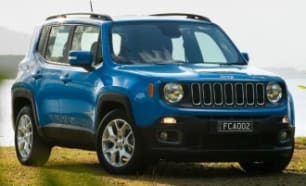If you’re after that electric car thrill of near-silent, almost mind-blowing acceleration, the Eclipse Cross mightn’t be the right car for you
But if swift progress and the buzz you get from taking off from the traffic lights without any hesitation at all is more your thing, it could be great for you. And if you’re not quite ready to go “full EV”, then it’s probably something you’re considering.
The EV driving mode is the best driving mode in this car. You can run it just on the petrol engine to ensure you save your battery range, and you might choose to do that when you’re driving on the freeway and know you’re approaching an urban area where the EV goodness will be better used. Or you could have it so it's using battery and petrol power, and that’s where you’ll get maximum combined performance.
But running the car in the default, EV-prioritised mode means you will make the best of this powertrain's strengths, because - for the fifty odd kays you’ll get out of the battery - it’s pretty good.
It’s also impressive the way this powertrain dips between petrol engine, battery pack or both at higher speeds. When the battery range had depleted on my test drive, the engine kicked in almost imperceptibly, working to power the car and also generate more electricity for the battery pack. It then dipped out of petrol, back to battery, and so on and so forth, multiple times during my drive.
The best thing about the way it did so was that it was smooth. There is barely any vibration from the petrol engine, the transmission doesn’t have any gears to fumble with, and overall the refinement is really good.
There are drive modes - Eco, Normal, Snow, Gravel and Tarmac - and in my test I kept to Normal. I did fiddle with the regenerative braking reactiveness, though, using the paddleshifters to dial up or down the aggressiveness of the energy recoup system. It doesn’t feel as aggressive as some pure electric cars, but thankfully it has a decent pedal feel and progression when you apply the brakes yourself.
The steering is light and lacks feel, and doesn’t offer that much engagement or involvement. That might matter to you if you’re like me. I wish it was more fun. But at least it’s easy to park.
While the suspension is fine and comfortable on the highway, it can feel wooden and the ride is quite lumpy at low speeds. It never really feels all that well resolved for urban driving, which is a bit of a downer considering that’s likely where a car like this will spend most of its time
The tune of the suspension - being a bit firm at lower pace - surprisingly doesn’t have any payoff when it comes to cornering, as it lacks a bit of body control, shifting its weight side to side.
All in all it is a decent plug-in hybrid offering – and will be perfectly suitable to someone who wants some EV driving as a part of their lifestyle. It’s just a matter of doing the maths as to whether it will work for you.









































 copy.png)











